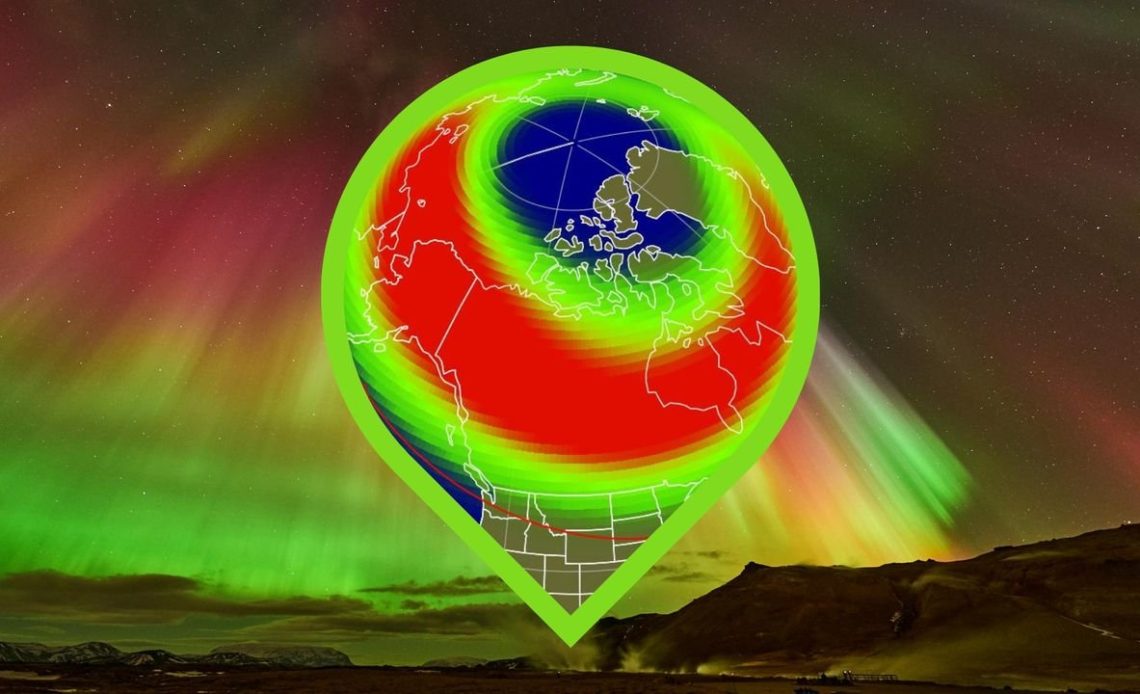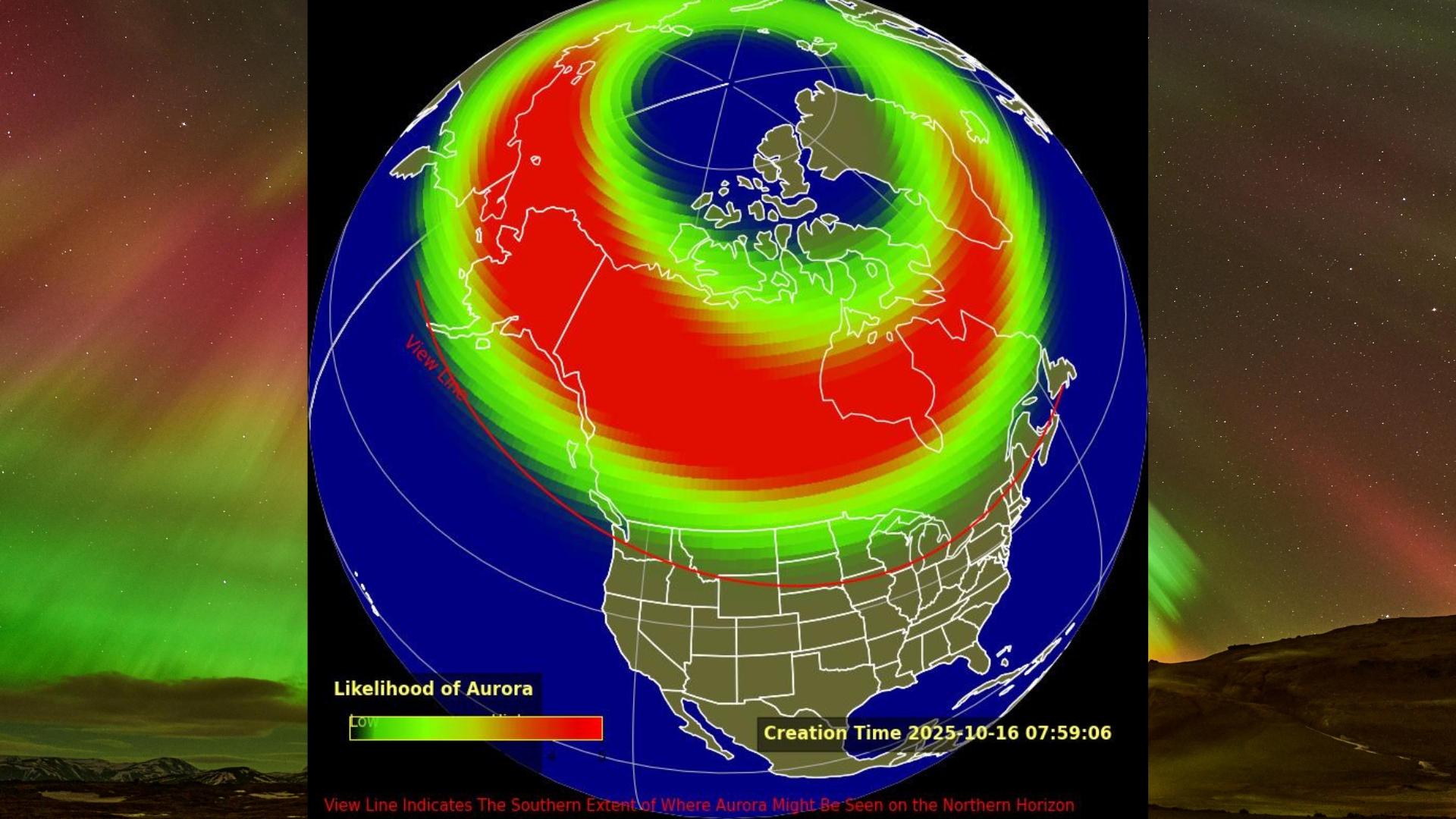
Heads up aurora chasers! The northern lights may receive a boost tonight as Earth is forecast to be hit by the first of a series of coronal mass ejections (CMEs) launched from the sun earlier this week.
NOAA’s Space Weather Prediction Center has issued a G2 (moderate) geomagnetic storm watch for Oct. 16 due to several incoming solar storms. The strongest impact is expected late on Thursday night into early Friday morning.
This means the northern lights could again dip farther south than usual, offering a glimpse of auroras for skywatchers in several northern U.S. states, weather and light pollution permitting.
Where and when can you see the northern lights tonight?
According to NOAA’s Kp index forecast, geomagnetic storming is expected to peak between 5 p.m. and 11 p.m. EDT (2100 and 0300 GMT on Oct. 17), with the Kp index estimated to reach 5.67, firmly within G2 levels.
Based on the latest NOAA aurora forecast map, the following 15 U.S. States appear fully or partially above the aurora view line:
- Alaska
- Washington
- Idaho
- Montana
- North Dakota
- South Dakota
- Minnesota
- Wisconsin
- Michigan
- New York
- Maine
- New Hampshire
- Vermont
- Wyoming
- Iowa
But remember, that auroras are highly unpredictable, so even if you’re within the view line, you’ll still need cloud-free skies, minimal light pollution, a clear view northward and a little bit of luck to catch the show.

Northern Hemisphere aurora forecast courtesy of the Met Office
How to see the northern lights where you live
If you’re in one of the 15 U.S. states listed above, here are some tips for catching a glimpse of the display.
- Head to a dark location far from city lights.
- Find a north-facing view with a clear horizon.
- Look up around midnight to 2 a.m. local time, but keep watch as soon as skies darken.
- Be patient. Auroras often come in waves and can appear faint at first.
We recommend downloading a space weather app that provides aurora forecasts based on your location. One option I use is “My Aurora Forecast & Alerts,” available for both iOS and Android. However, any similar app should work well. I also use the “Space Weather Live” app, which is available on iOS and Android, to get a deeper understanding of whether the current space weather conditions are favorable for aurora sightings.
What’s causing the aurora activity?
The latest predicted burst of geomagnetic activity is being driven by the anticipated arrival of multiple CMEs that left the sun between Oct. 11 and Oct. 13. The combined arrival of several CMEs in close succession could result in a “stacked” impact, a cumulative disturbance to Earth’s magnetic field that makes heightened geomagnetic activity more likely.
Author: Daisy Dobrijevic
Source: Space.com
Reviewed By: Editorial Team



